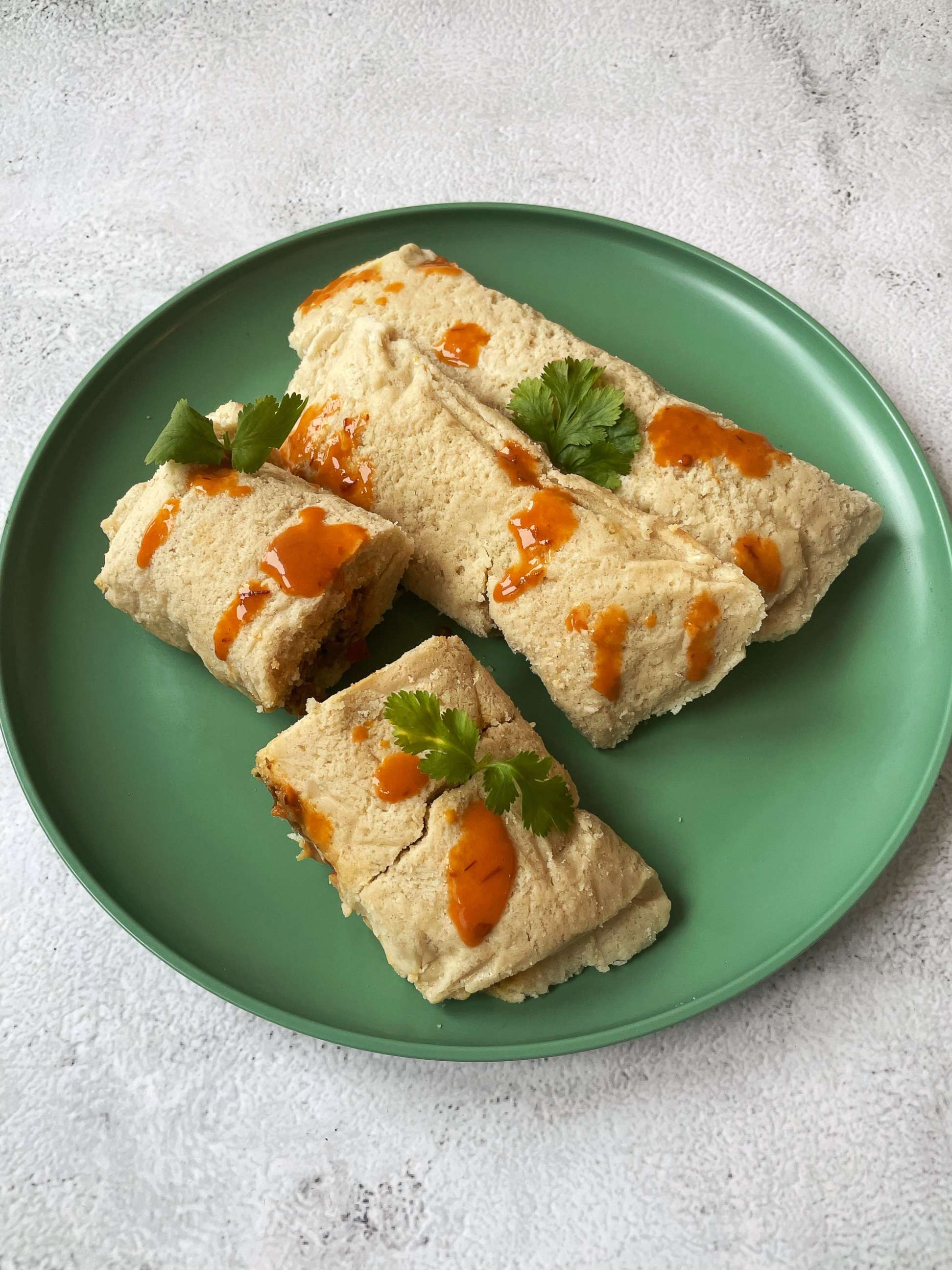How to make Panamanian-style tamales at home
And the trick to cooking them without plantain leaves.
Tamales are synonymous with Hispanic cuisine and while each country wraps, fills and cooks each version differently, the taste of tradition is infused in each recipe.
Latin American food creator Marisel Salazar shared a recipe with "Good Morning America" that gives home cooks a taste of her family's heritage from Panama.
"Tamales differ country-to-country in Latin America. Panamanian tamales are made using corn dough that's then wrapped in a banana leaf -- unlike Mexican tamales, which are wrapped in corn husks -- and cooked," Salazar explained. "Our tamales are a little bit wetter than other types, thanks to the addition of broth to the corn dough, and usually stuffed with chicken or pork. Unlike other tamales, Panamanian tamales often have raisins in them."

Salazar says her childhood memories of making tamales take her back to her family's breakfast table.
"It sounds unusual, but that is typical. Since making tamales by hand involves quite a bit of work, they are often only made around the holidays," she added.
In the U.S., with limited access to fresh plantain leaves for culinary use, Salazar said that "Panamanian tamales are really tough to make 'traditionally,'" but shared an alternative using tin foil or parchment paper.
Check out her full recipe below.
Ingredients
For the tamale masa (dough):
1 cups vegetable shortening or lard (I used Crisco)
1 3/4 cup chicken or beef broth
1 tablespoon baking powder
1/2 tablespoon salt
1 teaspoon sazón or annatto for color
2 cups instant corn flour
For the filling:
2 tablespoons olive oil
1/2 onion, finely diced
1 clove garlic, minced
1 green bell pepper, diced
2 cups of leftover cooked and shredded chicken or pork
1/2 can of diced tomatoes
2 tablespoons of tomato paste
1/2 cup manzanilla olives
1/3 cup raisins
1 cup of vegetable or chicken broth
1/2 teaspoon sazón or saffron
Directions
In a standing mixer with a whisk paddle, whip shortening or lard for about 20 minutes on medium-high speed until fluffy and peaks form -- similar to frosting or a meringue. Set to medium.
In a bowl, whisk together broth, baking powder, salt and sazón or annatto. Slowly pour broth into whipped shortening or lard until it incorporates into the fat. Do not pour all at once, wait until broth incorporates into shortening/lard before adding more liquid.
Once broth is incorporated, add corn flour, cup by cup. Continuing mixing on medium high until whipped and smooth. To test if the masa is ready, fill a cup of water and drop a tablespoon of the dough into the water. If it floats, the masa is ready. If it sinks to the bottom, then the masa needs more liquid or fat. Set aside the dough.
Add olive oil to a skillet over medium-high heat. Add onions and peppers. Cook until softened, about 5-8 minutes. Add chicken or pork and warm. Add tomatoes, tomato paste, olives, raisins and chicken broth. Cook for about 10 minutes. Add sazón or saffron. Mix and cook on low for about 10 more minutes until thickened. Remove from heat until cool enough to handle.
Roll out an 8x8 sheet of aluminum foil on a flat surface. Take ½ cup of masa and spread onto the aluminum foil in rectangle shape and put about two to three tablespoons of filling in a line down the center, leaving some space around the edges. Fold one side of the tamale over itself and press down. Wrap to form a rectangle and seal. Roll up open edges of the foil until tight. Repeat with remaining masa and filling.
Using a steaming basket in a pot, line up tamales as upright as possible on top of the basket. Add a few inches of water, being careful that you do not submerge the tamales. Boil the water. Once boiled, reduce to medium and cover tamales with a lid for about 15-20 minutes. To check if they are done, remove one tamale from the pot and let cool until safe to handle. Unroll and check to see if masa has cooked and is not soft or mushy. If it is still soft, return to pot and steam for 5-10 minutes.



